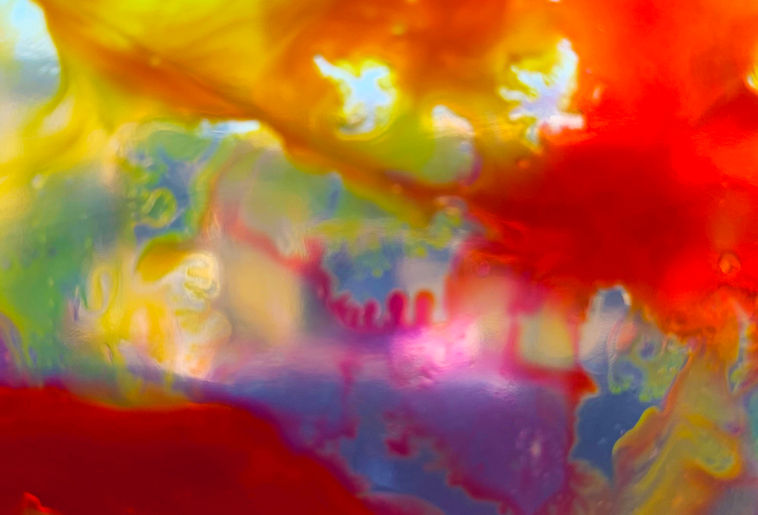
Colour

Exploration
After playing around with the idea of paper cutting to create the frame of the window I knew that I needed to address the element which I hadn't fully taken into consideration. Colour. Colour is one of the most essential aspects of Stained Glass, without it they wouldn't possess the life and vigour usually associated with them.
I had a brief idea that I didn't want to recreate stained glass in its traditional sense, the detailed and intricate paint features weren't something I was interested in recreating. I wanted to move away from those historically linked aspects and explore a more expressive way of using colour.
To begin with, I wasn't exactly sure how this was going to be achieved and knew that it was going to take much experimentation. The translucency was certainly going to be the biggest challenge, allowing the light through whilst gaining a saturated colour in order to bring the piece to life and add a sense of movement.
lET THE CHALLENGE BEGIN
To begin with, I needed to find a base layer, for that, I picked up some basic cellophane, which was flimsy but served as the perfect test subject. Then came the trickier part, finding something translucent which would adhere to cellophane and add a layer of colour.
I knew that I would require an adhesive layer which dried clear before adding the colour, using the adhesive as a barrier between the material used on the top and the cellophane. There were a couple of products that I used for this such as PVA, Clear Acrylic Medium and Wallpaper Paste, some worked better than others.
The Wallpaper Paste which was mixed with ink and water seemed to take forever to dry, then once dry it mattified and air bubbles were produced. It was also extremely delicate when handled and tended to break just at a touch. Therefore this method certainly wasn't suitable for what I needed to use it for. It was translucent so in that area the experiment was a success but it just wasn't fit for purpose.
The PVA and Clear Acrylic Medium faired much better, when mixed with ink they produced a stained glass effect on the cellophane, they also took less time to dry meaning that the method was more reliable. The overall outcome was much cleaner looking than with the wallpaper paste, the finish was more glossy and there weren't any air bubbles. The materials were much more manageable. The only concern I had with the method was that when dry the PVA pieces seemed to still be a little tacky meaning that if they touched they could get stuck together, tearing the layer of colour off, I had to be careful when handling the work.
The Permanent Markers worked too well, I realise that is an odd statement to make, however, the final image given by the pens seemed too clinical in style, there wasn't that inherent rawness which is present within the stained and painted glass.
After experimenting with the materials I came to the conclusion that the ones created with the acrylic medium and PVA worked best, the fluidity of the materials on the cellophane is effective and makes the piece seem authentic whilst masquerading as something it isn't. I still wish to experiment with other methods, whether this is sourcing some kind of coloured plastic and working into it or using actual glass and painting that.














